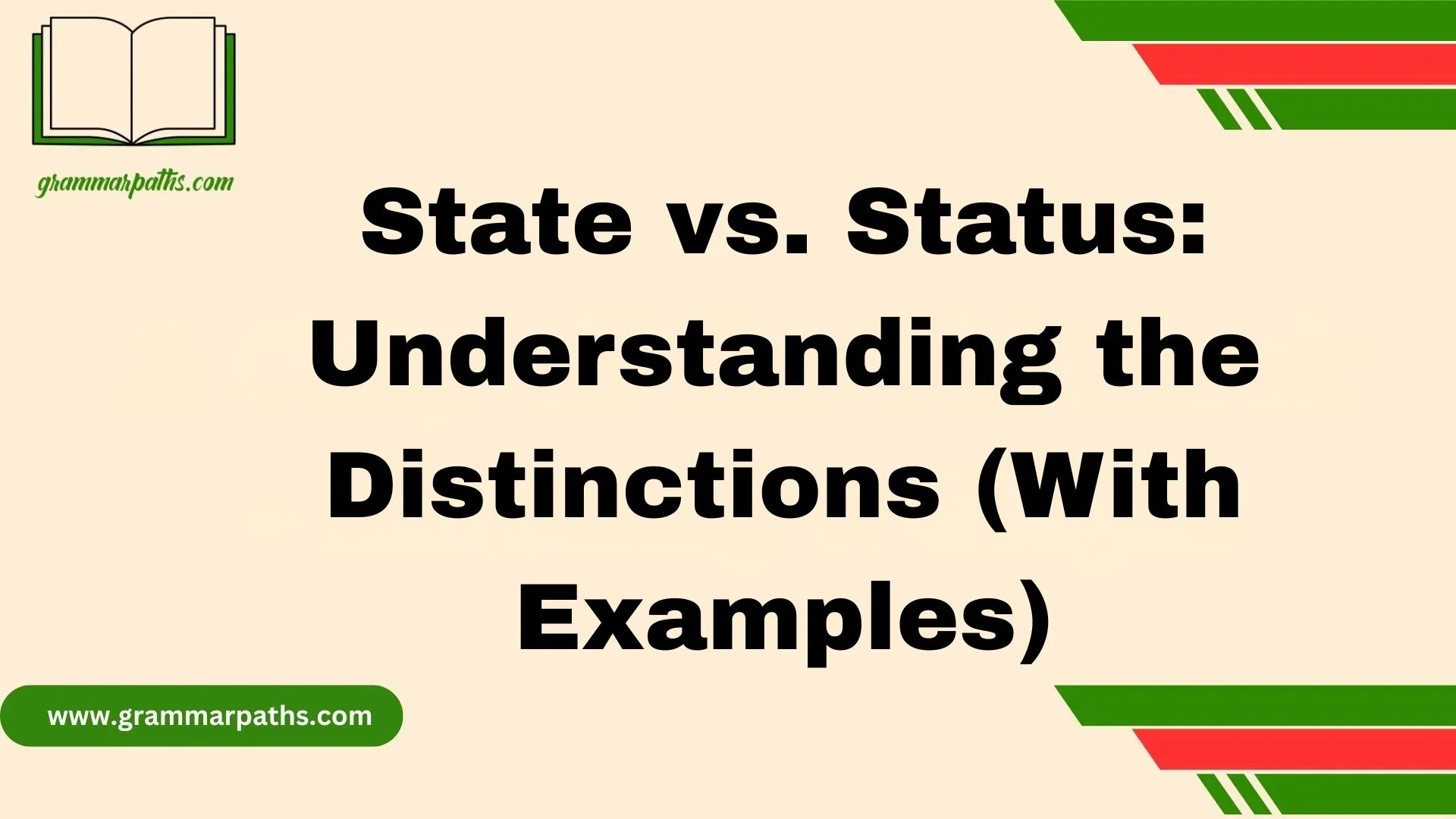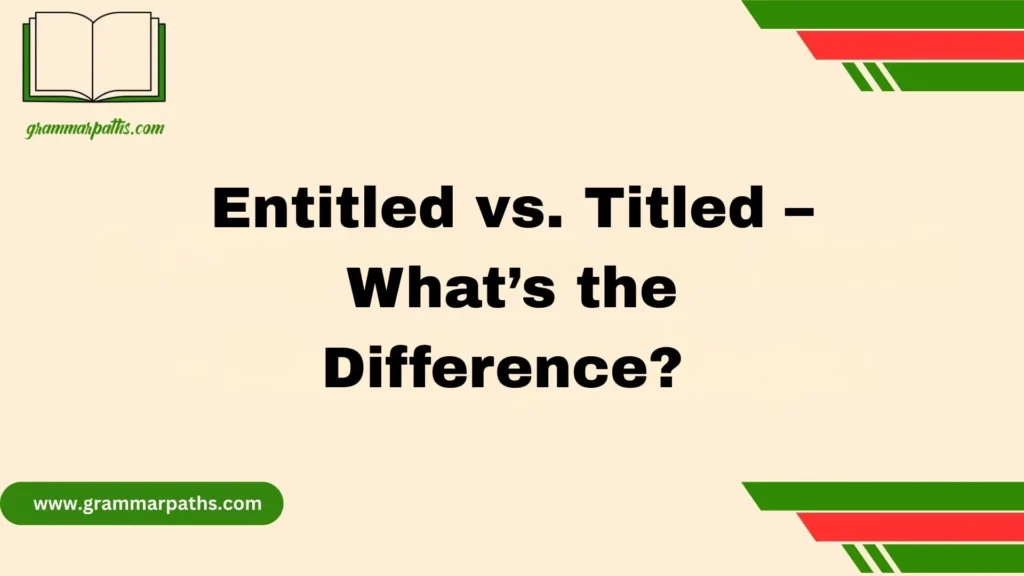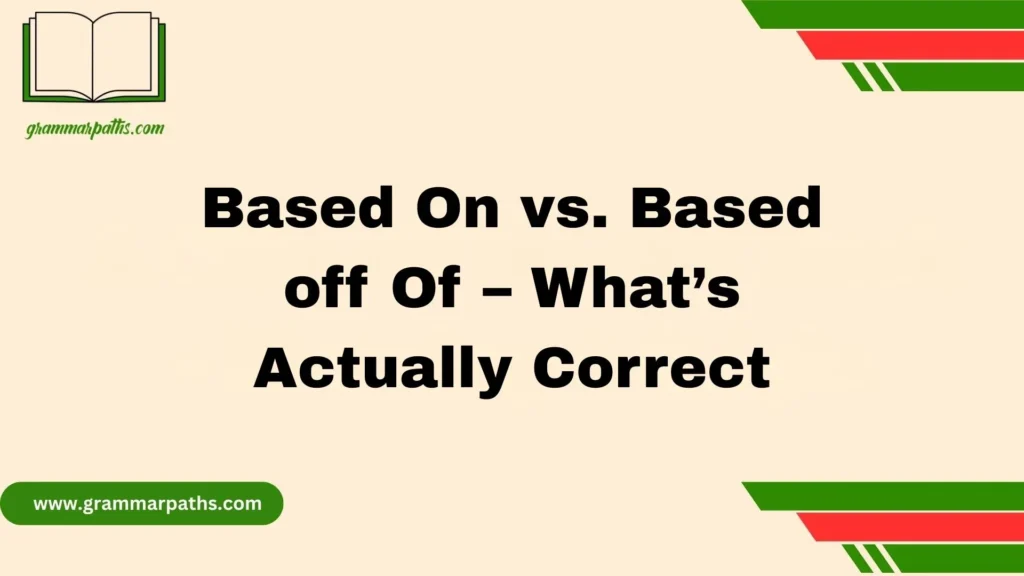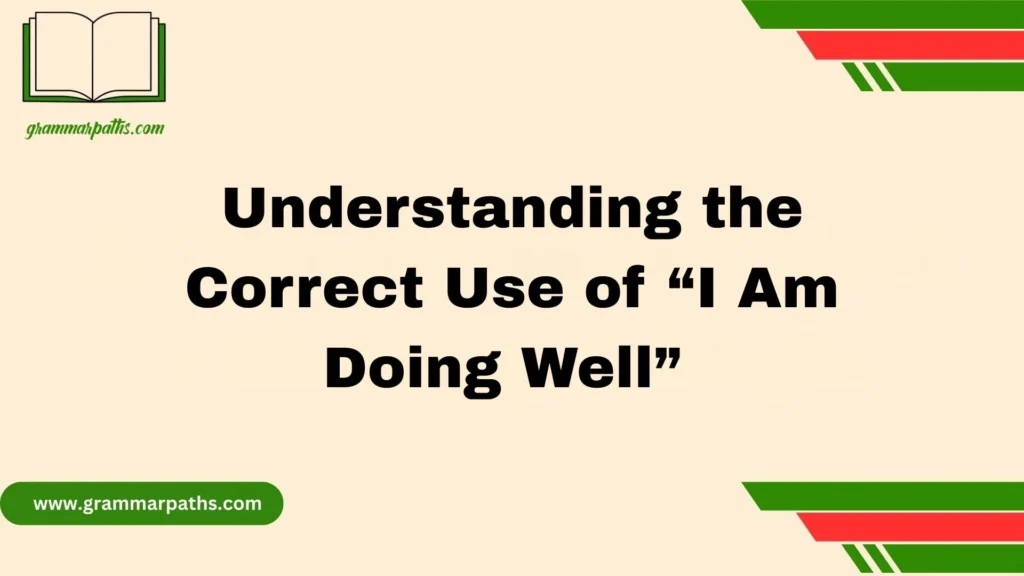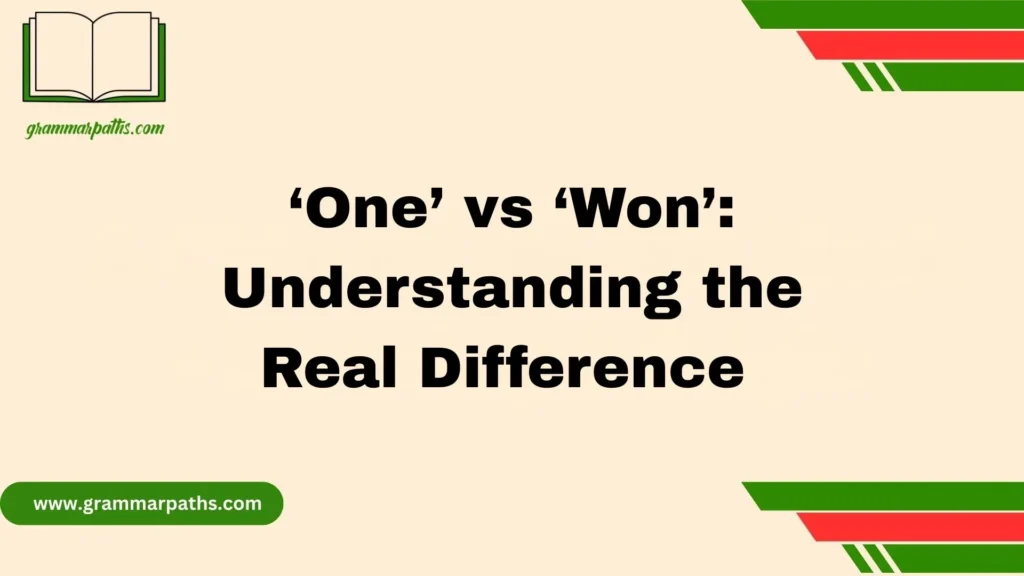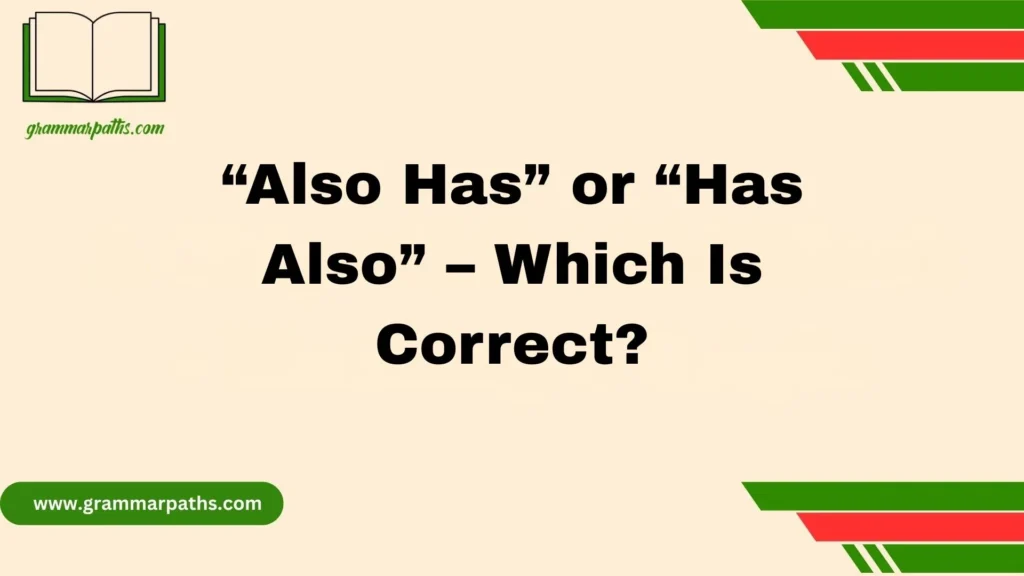In my years of editing and reviewing technical documentation, I’ve often been involved in crafting precise content for digital environments where I quickly noticed how people often confuse the idea of state and status. At first glance, these words sound similar; I’ve even heard them used almost interchangeably in casual conversations. But even a small difference in their meanings can have large effects, especially in technology, legal discussions, or professional documents. During one project, a development team started to misinterpret a server’s condition—whether it was idle, healthy, or failing—and this misunderstanding nearly delayed the product release. I learned that recognizing these distinctions is vital to communication. Whether I was writing a report, sending an email, or labeling software, the right interface and label had to deliver a clear message without confusion.
Over time, while working across multiple fields such as academic publishing, corporate branding, and creating a personalized guide that outlines terms, I realized clarity is not optional but essential in avoiding linguistic errors. In one workshop, we analyzed examples: a nation’s governmental structure is its state, while a person’s position in society is their status. That’s where grammar and language truly reflects culture, social order, and dynamics in the workplace. These layers of interpretations shape internal correspondence, legal frameworks, and even how ideas are interpreted, making us more informed as communicators.
Defining the Terms Clearly
What Does “State” Mean?
At its core, the word state refers to a condition or mode of being. It’s often temporary and can change quickly.
- Emotional condition: She was in a state of shock.
- Physical condition: The house is in a poor state.
- Scientific condition: Water exists in three states—solid, liquid, and gas.
Beyond personal or physical conditions, state also refers to a political entity. A nation-state is an independent country. In the U.S., “state” means one of the fifty divisions like California or Texas.
In law, state represents the government. When someone is tried in “the State vs. John Doe,” it’s the government bringing charges against an individual.
What Does “Status” Mean?
Status is about rank, classification, or standing. It describes where someone or something fits in a hierarchy, law, or system.
- Social position: He enjoys high status in his community.
- Legal classification: Her immigration status is pending.
- Professional rank: The project manager has a higher status than team members.
- Digital context: His online status shows “away.”
Unlike state, which can change from moment to moment, status tends to be more stable. For example, your “citizenship status” doesn’t change daily, but your “emotional state” might.
Key Distinctions Between State and Status
Although they sometimes overlap, the differences between state and status are clear when broken down:
| Feature | State | Status |
| Definition | Condition, situation, or mode of being | Rank, position, or classification |
| Nature | Temporary, changeable | More stable, structural |
| Contexts | Physical, emotional, scientific, political, legal | Social, legal, professional, digital |
| Examples | State of mind, State of California, gaseous state | Marital status, social status, online status |
In simple terms:
- State = condition.
- Status = standing.
‘State’ in Different Contexts
The versatility of state is what makes it unique. It appears in nearly every field, from science to politics.
- Emotional/Psychological:
He was in a state of deep sadness after the loss. - Physical/Scientific:
Matter exists in three states: solid, liquid, gas. Scientists are now exploring plasma as a fourth state. - Political/Governmental:
The United States is composed of 50 states.
France is a nation-state with centralized governance. - Legal/Judicial:
The case of State vs. Williams highlights how the government acts as the prosecuting authority.
State is flexible—it describes conditions of people, things, or institutions.
‘Status’ in Different Contexts
Status, on the other hand, often deals with hierarchy, classification, or recognition.
- Social Standing:
Owning property once granted higher status in many societies. - Professional Standing:
A CEO has a higher status in a company compared to an intern. - Legal Classification:
Citizenship status determines voting rights and residency privileges.
Marital status is recorded as single, married, divorced, or widowed. - Digital/Modern Use:
Social media platforms let users update their status to “feeling happy” or “busy at work.”
In essence, status marks where you stand in a system—whether social, legal, or professional.
Examples That Clarify the Difference
Sometimes, the best way to understand two similar terms is to see them side by side:
| Example Sentence | Word Used | Meaning |
| She is in a state of confusion. | State | Describes her current mental condition. |
| She has a high status in her company. | Status | Describes her rank or position in the workplace. |
| The country declared a state of emergency. | State | Official condition imposed by government. |
| His legal status is permanent resident. | Status | Classification in immigration law. |
| The room was in a messy state. | State | Condition of the room. |
| Her marital status is divorced. | Status | Legal/social classification. |
Notice how state relates to “what condition something is in” while status shows “where something stands.”
State vs. Status in Society
Both words play a major role in shaping society.
- State affects individuals directly. Your state of health, state of mind, or state of environment influences how you live daily.
- Status influences perception and opportunity. High social status can open doors, while low status may limit chances.
For instance:
- A state of poverty can reduce access to education.
- That in turn lowers social status in the community.
This shows how state and status often interact, one feeding into the other.
State vs. Status in Professional Life
In the workplace, the distinction is even clearer.
- State at Work
- An employee’s state of mind (stress, motivation, creativity) affects productivity.
- The financial state of a company determines hiring and growth opportunities.
- Status at Work
- Job titles reflect professional status: intern, manager, director, CEO.
- Recognition (awards, seniority) builds workplace status.
Case Study:
Imagine two employees:
- Employee A is in a good state of mind (motivated, energetic) but has a junior status in the company.
- Employee B has a senior status as a manager but is in a negative state (burnt out, disengaged).
Result: Employee A may outperform despite having a lower official status, proving how state and status both matter, but in different ways.
Cultural and Historical Perspectives
Different cultures highlight state and status in unique ways:
- State in Philosophy: Ancient Greek philosophers used “state” to describe conditions of being—Plato’s “ideal state” was both political and moral.
- Status in History: In medieval Europe, status determined everything. Nobility had privileges denied to commoners.
- Modern Shifts: In the digital era, online “status updates” show how the word has evolved into everyday tech language.
From ancient politics to modern apps, state and status have grown with society, always carrying distinct but influential meanings.
Practical Guide: Choosing the Right Word
Here’s how to know which one to use:
- Use state when describing:
- Temporary conditions (state of confusion, state of health)
- Political entities (State of Texas, nation-state)
- Scientific conditions (solid state, state of matter)
- Use status when describing:
- Social rank (high status, low status)
- Legal categories (citizenship status, marital status)
- Professional or digital standing (job status, online status)
Common Mistakes to Avoid
- “Her status of health is weak.”
- “Her state of health is weak.”
- “He’s in a low state at work.”
- “He has low status at work.”
Memory Trick
Think of it this way:
- State = situation.
- Status = standing.
Conclusion
Understanding the difference between state and status is more than a matter of grammar—it’s about how language shapes communication across technology, legal matters, and professional settings. From avoiding misunderstanding in a project or server’s condition to ensuring clarity in documents, these two words carry distinct meanings that can have large effects. By staying informed and applying a personalized guide in everyday writing, editing, and documentation, we can deliver the right message without confusion.
FAQs
Q1: Why do people often confuse state and status?
Because the words look similar and are sometimes used interchangeably in casual conversations, leading to errors in communication.
Q2: How is state different from status in technology?
A state might show if a server’s system is idle or failing, while its status could reveal whether it’s healthy or functioning properly for development and product release.
Q3: Can state and status affect professional documents?
Yes. In legal discussions or corporate branding, mixing up terms may lead to misinterpretation in reports, email, or internal correspondence.
Q4: What’s an easy way to remember the distinction?
Think of state as describing structure or condition (like a nation’s governmental framework), and status as showing position in society or workplace dynamics.
Q5: Why is clarity important in using these terms?
Because clarity is essential in avoiding linguistic mistakes that could delay a project or change how something is interpreted across frameworks and fields.

Grace Marie is the dedicated writer behind GrammarPaths.com, where she shares her passion for English grammar, idioms, and writing mastery. With a strong background in language studies and years of experience helping learners improve their communication skills, Grace creates clear, practical, and engaging content that makes English easy to understand.
